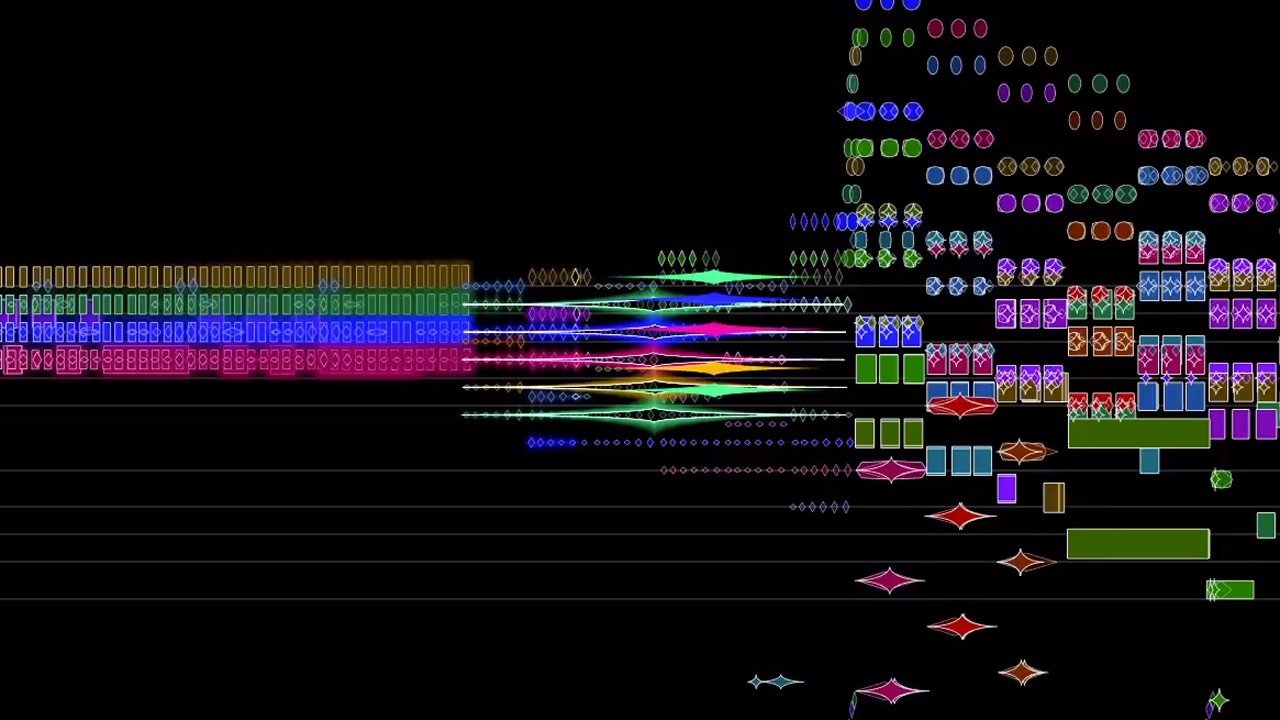Pagan sacrifice! Violent flailing! SEX! When Igor Stravinsky The Rite of Spring ballet premiered at the Théâtre des Champs-Élysées in Paris 100 years ago today, there were fist fights in the audience. Indignant critics limped on home, cradling their jolted nervous systems.
There is so much going on in this piece. Now, you can see it in Stephen Malinowski‘s beautiful visualization animation, as performed and rendered by Jay Bacal using Vienna Symphonic Library’s virtual instrument software. They’re entrancing. PUT YOUR HEADPHONES ON. FULL SCREEN. HD. DO IT.
“I was not aware of the kind of harmonic things Stravinsky has going on,” Malinowski tells NPR. “It’s incredible — Stravinsky continually torques you, startles you, and frustrates your anticipations.”
What are you looking at exactly?
Each shape corresponds to a family of instruments:
ellipse: flutes (also cymbals and tam-tam)
octagon: single reed (clarinet, bass clarinet)
inverted ellipse/star: double reeds (oboe, English horn, bassoons)
rectangle: brass (also, with “aura,” timpani, guiro and bass drum)
rhombus: stringsIn this video, musical pitch (as ordered in the musician’s “circle of fifths”) is mapped to twelve colors (as ordered on the artist’s “color wheel”). With this mapping, changes in tonality and harmony correspond to changes in the color palette. You can read more about this technique here.
Unpitched instruments (bass drum, cymbals, tam-tam, triangle, guiro) are shown in gray.
Stravinsky, The Rite of Spring, Part 1: The Adoration of the Earth
Stravinsky, The Rite of Spring, Part 2: The Exalted Sacrifice
Malinowski also created the animations for Bjork’s “Biophilia” project.
This is the score to The Rite of Spring.



